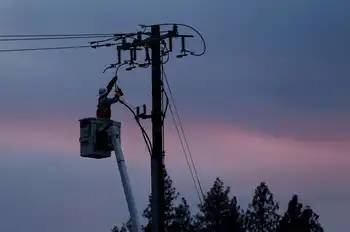Read your meter on your phone
By Globe and Mail
CSA Z463 Electrical Maintenance
Our customized live online or in‑person group training can be delivered to your staff at your location.

- Live Online
- 6 hours Instructor-led
- Group Training Available
But for the eco-conscious mobile user, developers also are designing more socially responsible applications that can help you track your energy use, find local shops specializing in organic food, and reduce your carbon footprint.
Here are some of the more popular green-focused applications available for mobile devices:
MeterRead (iPhone)
You don't have to work for the power company to learn how to read the meters in your home that show just how much energy you're consuming in a given month. Now with MeterRead, developed by Zerogate, you can enter the information on the dials of your electricity meter at two different times and the application will begin to measure how much electricity is being consumed.
The application is able to calculate total kilowatts per hour between each reading, the average watt load and can even predict your 30-day kilowatts per hour usage stats. The application is popular with owners of new homes who would like to know how much their first electric bill will be. Zerogate is working on applications that will read water and gas meters. Price: $2.99 (US)
Shopgreen (iPhone)
Previously known as "Carbon Meter," this iPhone application offers tips on recycling and tasty green recipes and even rewards you for thinking and acting in an environmentally friendly manner.
Using the location-based technology of the iPhone, Shopgreen tracks how much running, walking and biking you do, and stores that information to a built-in Eco-Bank, which then doles out coupons that can be used at participating green-friendly retailers.
The application also notifies you when you are near recycling centres, and the location-aware technology allows partner companies to send special offers and discounts to you when you are near one of their physical locations. Price: Free
Seventh Generation (iPhone)
For lovers of everything organic, or for those who want to know exactly what is in the bathroom cleaner they grabbed at the grocery last week, Seventh Generation's Label Reading Guide allows users to look up the ingredients of common household products.
You can enter an ingredient and the application will tell you what it's made of and its known effects on humans. If you can't find a specific ingredient in the list, you can submit it to the database. Price: Free
Ecorio (Google Android)
This one was created by a handful of University of Waterloo graduates. It uses the GPS chip inside the G1 — the first smart phone to incorporate Google's new Android mobile software — to track the user's travels and rate of speed. The application then calculates your carbon footprint.
The application also suggests ways that you can reduce the amount of emissions you are producing, by finding carpool and public transit options along your regular travel routes.
Although the application is available only on Android (as yet unavailable in Canada) Ecorio's developers are working on versions for other mobile platforms. Price: Free
GreenPhone (Nokia Symbian)
This application designed for devices running Nokia's Symbian Series 60 operating system helps you curb the amount of energy your mobile phone consumes by notifying you when it is performing non-essential tasks. Greenphone allows you to change your options so that the phone's backlight dims after one second instead of five. When the phone is plugged into a charger, it can notify you that it has reached 100 per cent and should be unplugged to protect the battery and the charger. It will even notify you that it is time to turn off the phone's Bluetooth connection if it has been left on. Price: $15 (U.S.)
Gas Trip (Google Android)
Not just another Android application, Gas Trip is designed to take some of the pain out of heading to the pumps. Users punch in how many kilometres per litre their car gets, and by utilizing location-based technology, the application calculates how much money a car trip is costing in real time based on the speed and distance the car is travelling. The application is also able to find the lowest price of gas in your area and can offer turn-by-turn directions to help you get there. Price: Free
MoCarbon Guru (Nokia Symbian)
Can't remember when to charge your phone or when to unplug your mobile charger? Think that a tiny Buddha-like avatar on your home screen might help you remember? If so, then this is the application you've been waiting for. MoCarbon Gugu features reminder wallpaper that notifies you when it's time to charge your phone, unplug your phone and unplug your charger. But do it quickly, otherwise the Guru will scold you for wasting energy. Price: $8 (€4.99)











